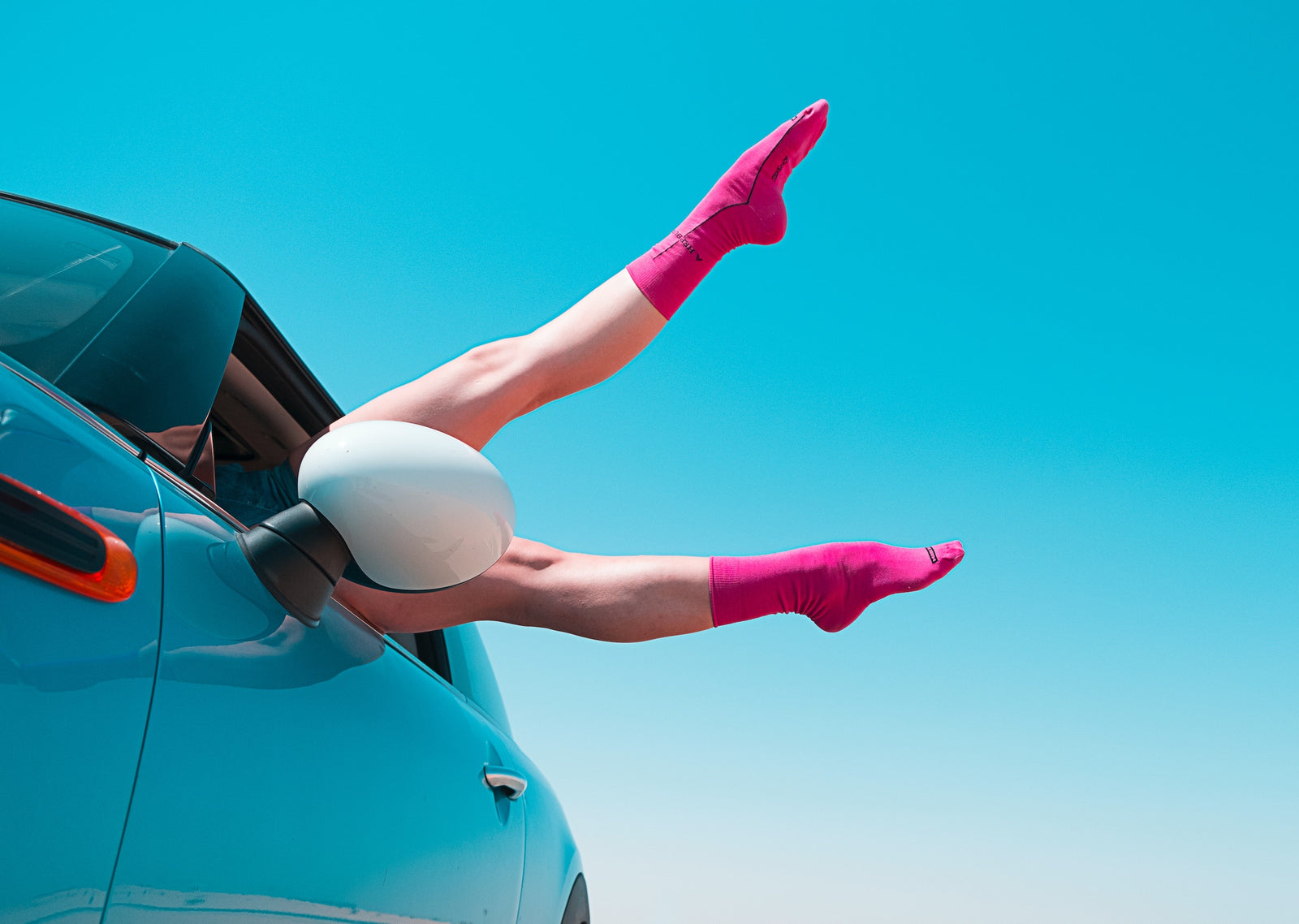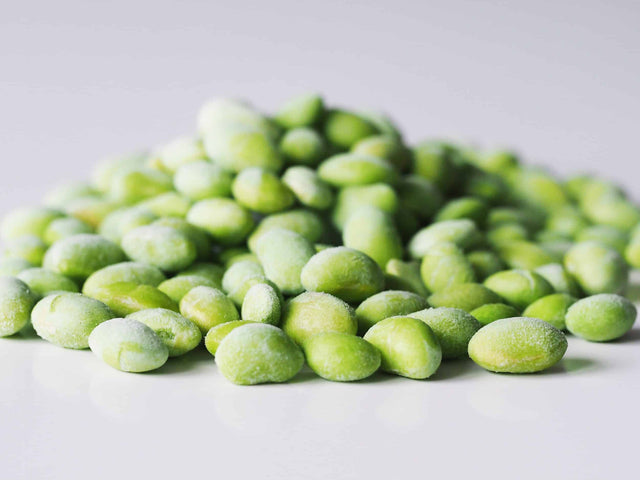If you’re an avid runner, then I’m willing to bet you’ve heard of compression socks. Studies have shown that compression socks can help benefit improved blood flow and circulation, increase oxygen delivery to the muscles, and remove lactic acid for better exercise recovery. We’re going to look at the scientific evidence regarding the specific benefits of compressions socks for athletes, to find out if they’re really worth wearing on your daily run.
What Are Compression Socks?
Compression socks or compression stockings were first introduced as a clinical experiment to prevent deep vein thrombosis (DVT). Studies demonstrated that compression socks improved the venous return by increasing femoral vein blood flow velocity in hospitalized patients. Over time, the athletic community became interested in applying compression socks as a tool to improve performance and exercise recovery.
Compression socks are made to gently squeeze around your legs from the knee down. Their intention is to promote better blood circulation in the legs. Insufficient blood flow can result in diminished returns of blood to the heart, being retained in your legs. Compression socks reduce the ability of superficial veins to expand and fill with blood, preventing blood flow from creating congestion.
Benefits Of Compression Socks
Improved Exercise Performance
One of the main reasons for wearing compression socks during exercise, is the expectation of performance enhancement. Over training your legs can cause stress, fatigue, tension and restrict circulation. The support from compression socks and compression therapy increases circulation and provides relief for foot pain, shin splints, muscle inflammation, soreness and helps improve athletic performance.
A systematic review investigating the effects of compression socks on exercise performance, found that those wearing compression socks during soccer matches, were able to cover more ground and higher distances. Therefore, researchers believe that the benefits of wearing compression socks are that they probably protect the eccentric actions of running or smaller muscle oscillations.
A study found in the Journal Of Strength and Conditioning found an improvement in running performance concomitantly with anaerobic and aerobic thresholds when participants wore compression socks [R].
The benefits of compression socks on performance come directly from attributed to enhanced biomechanical support of the muscles, leading to higher efficiency and lower metabolic costs at given workloads, reduction of muscular microtrauma [R] and enhanced the proprioception [R]
Reduced Muscle Soreness And Fatigue
Several studies have shown that compression socks induce positive benefits on muscle fatigue and perceived muscle soreness post workout. Compression socks can become very beneficial especially during prolonged periods of activity with short recovery time, such as high intensity functional training modalities.
A study investigating the effects of compression socks on running performance in the Journal of Strength and Conditioning found that competitive runners wearing low to medium pressure compression socks improved countermovement jump performance post workout suggesting better maintenance of muscle function [R]. Other studies have shown that running uphill and downhill decreased muscle function and increased muscle fatigue which was counterbalanced with compression socks. Peak torque was improved at 1 hour, 24-, and 48-hour post workout time periods, with an improvement in perceived muscle soreness due to the higher preservation of muscle function [R].
Other General Benefits Of Compression Socks Include
- Blood Circulation
- Oxygen Transport
- Improves Lymphatic Drainage
- Diminishes Leg Swelling
- Helps Prevent Blood Clots
- Helps Reduce Leg Pain
- Prevents Development of Deep Vein Thrombosis (DVT)
What Are The Best Types Of Compression Socks
When it comes to purchasing compressions socks, you must first identify why you are purchasing them? Compression socks can be worn to reduce pain and swelling in your legs for medical conditions, or they can be worn for athletic aspirations. There are three primary types of compression socks graduated, anti-embolism, and non-medical.
Graduated
Graduated compression socks are the strongest tension at the ankle and gradually decreases towards the knee. These require a professional fitting in a medical environment. This type of compression sock is very common to treat lower leg swelling.
Anti-Embolism
Anti-embolism compression socks are used to reduce the possibility of DVT. Like graduated socks, they provide gradient compression, however the level of compression may differ.
Non-Medical- Athletic
Non-medical or compression socks worn for athletic purposes are graduated as well, yet do not require professional fitting. Most socks will be moisture-wicking from the toes to the knee, usually made with nylon, lycra, or polyster for better pressure and compression allowing for improved torque, reduced inflammation, and improved recovery.
Benefits Of Compression Socks: Takeaway
Although the underlying mechanism of benefits of compression socks is unclear, research suggests it may be related to increased oxygen delivery, lower muscle oscillation, and better running mechanics. If you’re putting a high number of miles on the pavement each week and feeling fatigued, sore, or experiencing shin splints, compression socks could help you improve muscle function, and optimize recovery.
SWOLVERINE is an endurance athlete and active lifestyle brand. Made for the elite athlete, and the strong-willed our products were designed to fuel your athletic performance. We perform when you perform.
We believe that everyone can optimize not only their athletic performance but their human potential. The way we believe we can optimize performance is through transparency, clinically effective doses, and clinically proven ingredients with evidence-based outcomes. We provide the nutrients you need to power your active lifestyle.
References
Mota, Gustavo R et al. “Effects of Wearing Compression Stockings on Exercise Performance and Associated Indicators: A Systematic Review.” Open access journal of sports medicine vol. 11 29-42. 22 Jan. 2020, doi:10.2147/OAJSM.S198809
Kemmler W, von Stengel S, Kockritz C, Mayhew J, Wassermann A, Zapf J. Effect of compression stockings on running performance in men runners. J Strength Cond Res. 2009;23(1):101–105. doi:10.1519/JSC.0b013e31818eaef3 [PubMed] [CrossRef] [Google Scholar] [Ref list]
Aerobic energy cost and sensation responses during submaximal running exercise--positive effects of wearing compression tights.Bringard A, Perrey S, Belluye N Int J Sports Med. 2006 May; 27(5):373-8. [PubMed] [Ref list]
Compression garments to prevent delayed onset muscle soreness in soccer players. Valle X, Til L, Drobnic F, Turmo A, Montoro JB, Valero O, Artells R Muscles Ligaments Tendons J. 2013 Oct; 3(4):295-302.[PubMed] [Ref list]
Ali A, Creasy RH, Edge JA. The effect of graduated compression stockings on running performance. J Strength Cond Res. 2011;25(5):1385–1392. doi:10.1519/JSC.0b013e3181d6848e [PubMed] [CrossRef] [Google Scholar] [Ref list]
Bieuzen F, Brisswalter J, Easthope C, Vercruyssen F, Bernard T, Hausswirth C. Effect of wearing compression stockings on recovery after mild exercise-induced muscle damage. Int J Sports Physiol Perform. 2014;9(2):256–264. doi:10.1123/ijspp.2013-0126 [PubMed] [CrossRef] [Google Scholar] [Ref list]







